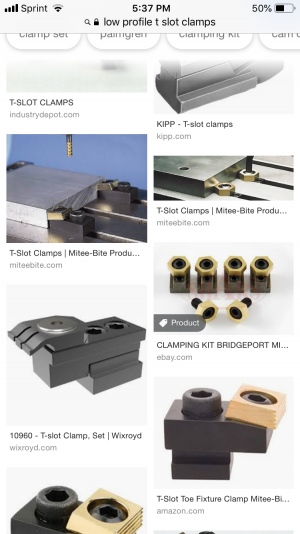- Joined
- Jun 29, 2018
- Messages
- 92
I have a piece of aluminum plate, about 8.5" square, .250" thick. It's not flat- is it possible to mill the face / faces to get it flat?
How would this best be done? I have a J-head Bridgeport mill.
The main thing I'm trying to get is how to clamp it - but the common way, obviously, the clamps get in the way...
How would this best be done? I have a J-head Bridgeport mill.
The main thing I'm trying to get is how to clamp it - but the common way, obviously, the clamps get in the way...


